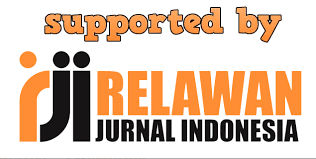Identification of Ethanol in the Urine of Moke Drinkers Based on Variation of Time After Consuming the Beverage
DOI:
https://doi.org/10.32382/medkes.v19i2.1091Keywords:
Etanol, urine, pengonsumsi moke, kalium dikromatAbstract
Ethanol can be found in Moke drinks which have quite serious impacts if too much is in the human body, because it can cause various diseases, especially in the liver, because the liver functions as a detoxification of toxins in the body. This study aims to identify ethanol in the urine of Moke drink consumers from Maumere Flores. The research conducted was an experimental study, using the Potassium Dichromate method. The sampling technique was a purposive sampling technique with the criteria of age 25 years and over, male gender, and duration of consumption such as 1 hour, 24 hours, and 48 hours after consuming the drink. The sample of this study was 6 urine samples after consuming moke drinks for 1 hour, 24 hours, and 48 hours. The results of the study showed that ethanol could not be identified in urine more than 24 hours after consumption, which was indicated by the absence of color changes in each moke consumer's urine within 24 hours and 48 hours shown in tables 1, 2 and 3. Thus, positive results were obtained from 1 hour after consumption, then negative results for 24 hours and 48 hours. So it can be concluded that the ethanol contained in the urine of moke drink consumers cannot survive in the body for 24 hours.
Keywords: ethanol, urine, moke consumers, potassium dichromate
References
BPOM, 2016. Standar Keamanan dan Mutu Minuman Beralkohol, Jakarta: Peraturan Kepala Badan Pengawas Obat dan Makanan Republik Indonesia.
Ernawangtyas, E. & Yudhayanti, D., 2017. Penetapan Kadar Alkohol pada Arak Jowo yang Beredar Di Ponorogo dengan Metode Destilasi. Jurnal EDUNursing, 1(2), pp. 57-63.
Park, H. & Kim, K., 2012. Association of Alcohol Consumption With Lipid Profile in Hypertensive Men. 10.1093/alcalc/ags019, 47(3), pp. 282-287.
Purbayanti, D. & Saputra, N. A. R., 2017. Efek Mengkonsumsi Minuman Beralkohol Terhadap Kadar Triglisrida. Jurnal Surya Medika, 3(1), pp. 1-7.
Rasyid, N. Q. & Muawanah, 2021. Penuntun Praktikum Toksikologi Klinik IV. Makassar: Prodi D3 Teknologi Laboratorium Medis Politeknik Kesehatan Muhammadiyah.
Rasyid, N. Q. & Muawanah, 2021. Penuntun Praktikum Toksikologi Klinik IV. Makassar: Prodi D3 Teknologi Laboratorium Medis (TLM), Politeknik Kesehatan Muhammadiyah.
Saka, A. F. D. & Nainggolan, E. E., 2019. Tinjauan Teori Compliance Tentang Tradisi Minum Moke Dikabupaten Ende Nusa Tenggara Timur. Prosiding Seminar Nasional & Call Paper Psikologi Sosial, pp. 202-208.
Soenardi, T. & Soetardjo, S., 2012. Hidangan Sehat Untuk penderita Hipertensi.. Jakarta: PT. Gramedia Pustaka Utama.
Steiner, J. L. & Lang, C. H., 2017. Alcohol, Adipose Tissue and Lipid Dysregulation. Biomolecules, 7(1), p. 16.
Stornetta, A., Guidolin, V. & Balbo, S., 2018. Alcohol-Derived Acetaldehyde Exposure in the Oral Cavity. Cancers (Basel), 10(1), p. 20.
Suaniti, N. M., Asih, I. A. R. A. & Astuti, N. P. W., 2012. Deteksi Etanol Setelah Konsumsi Arak Dalam Urin Dengan Gas Chromatography. Jurnal Kimia, 6(2), pp. 123-126.
Suaniti, N. M. & Widya, N. P., 2011. Ethanol Levels in Arak Market by Gas Chromatography Techniques. Bali, Proceeding, International Conference on Chemistry and Biochemistry, Udayana University.
Wardlaw, G. M., Smith, A. M. & Lindeman, A. K., 2014. Contemporary Nutrition: A Functional Approach. 4th ed. U.S.A: McGraw-Hill Educational
Downloads
Published
How to Cite
Issue
Section
PDF (Bahasa Indonesia) downloaded: 542















